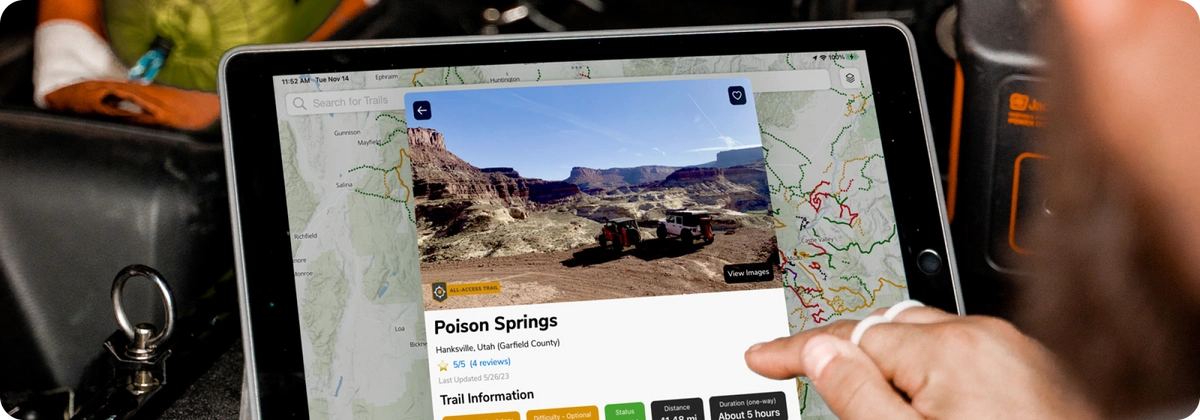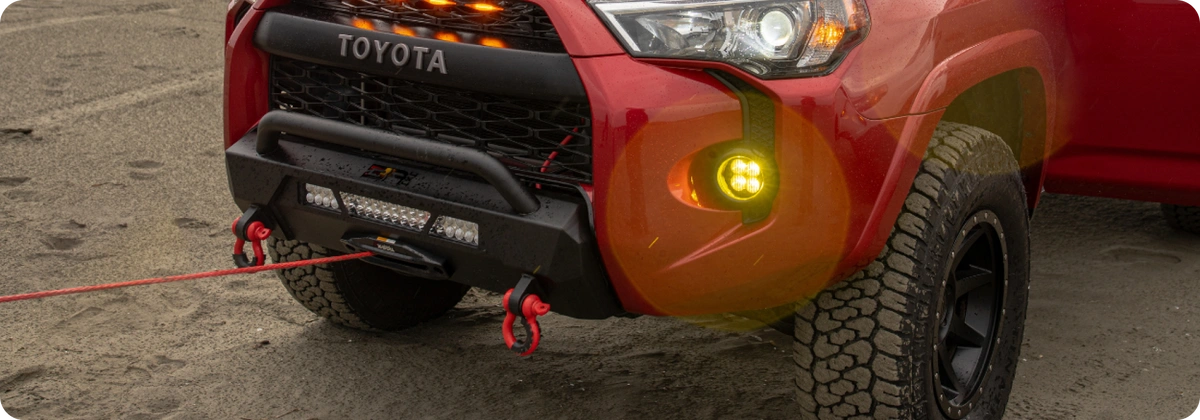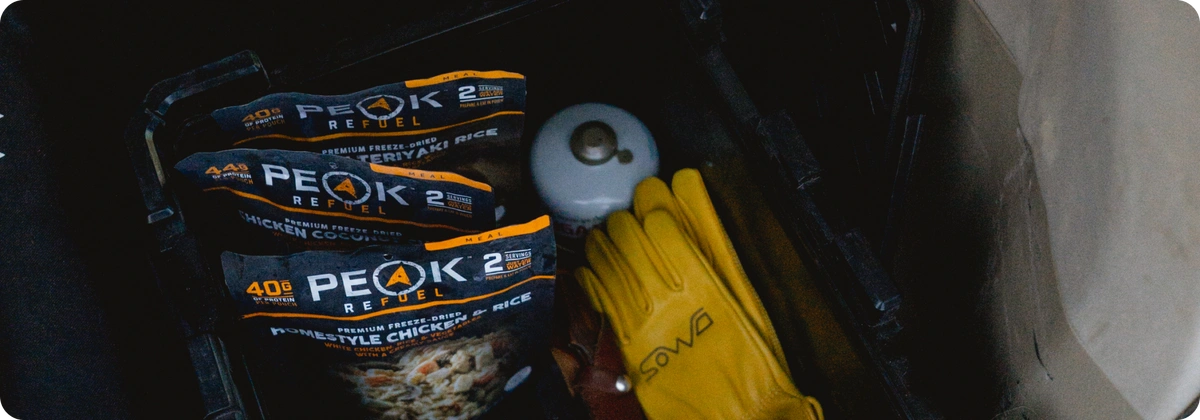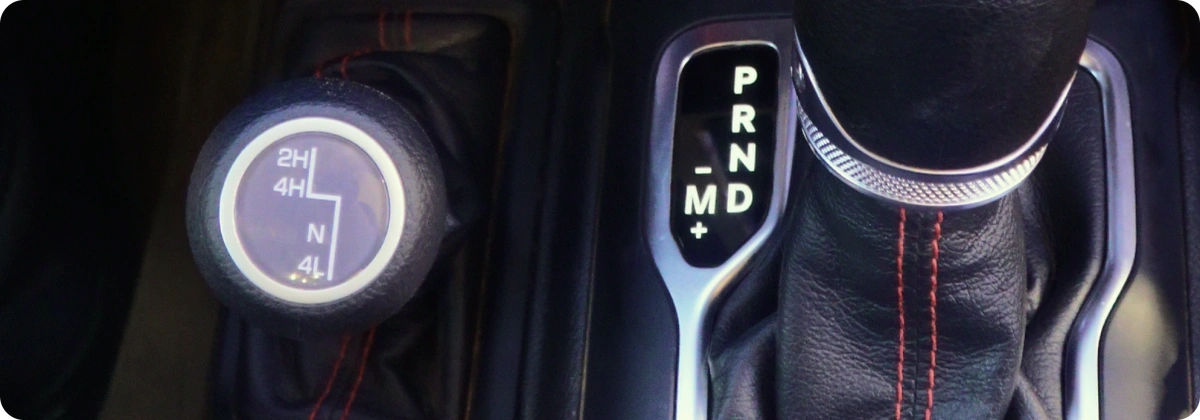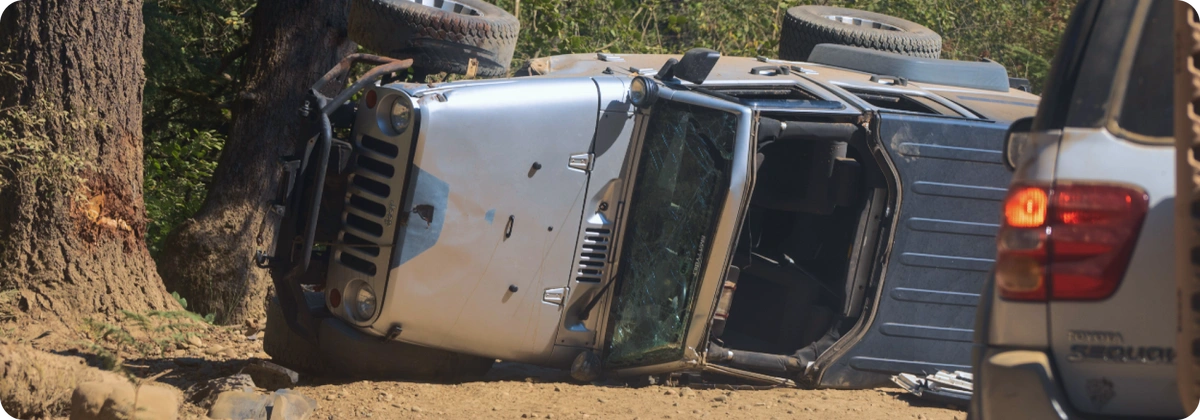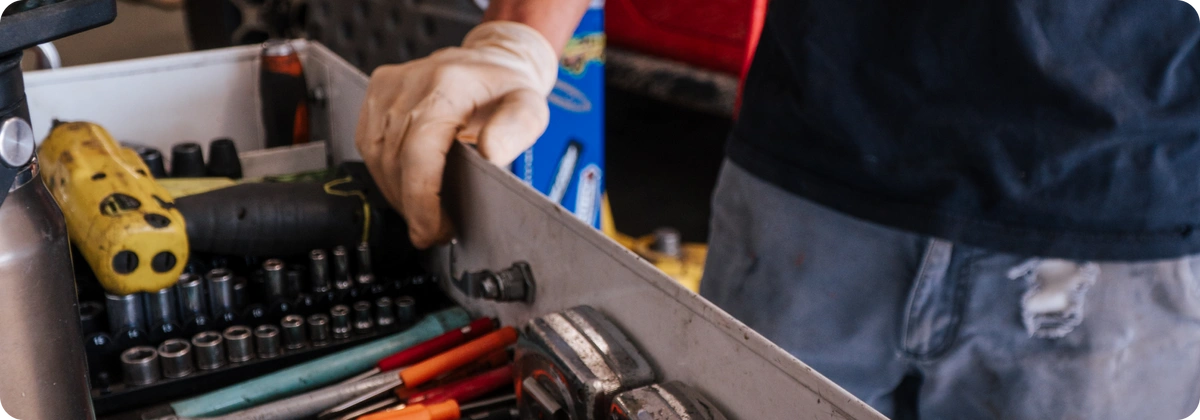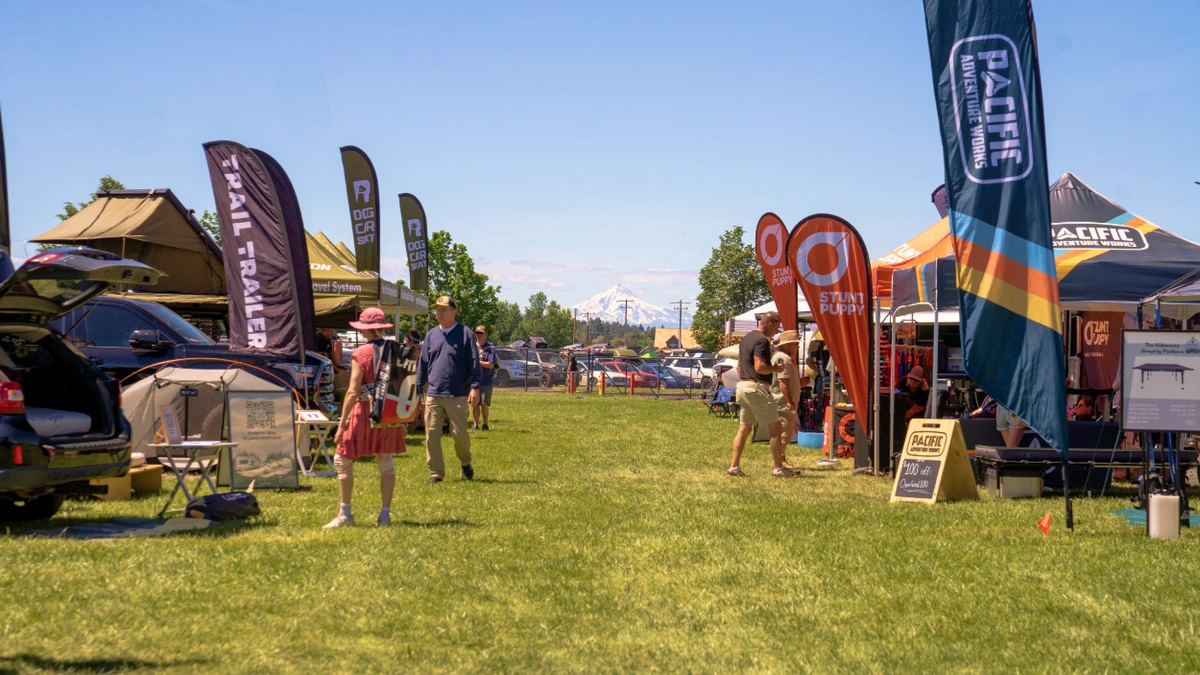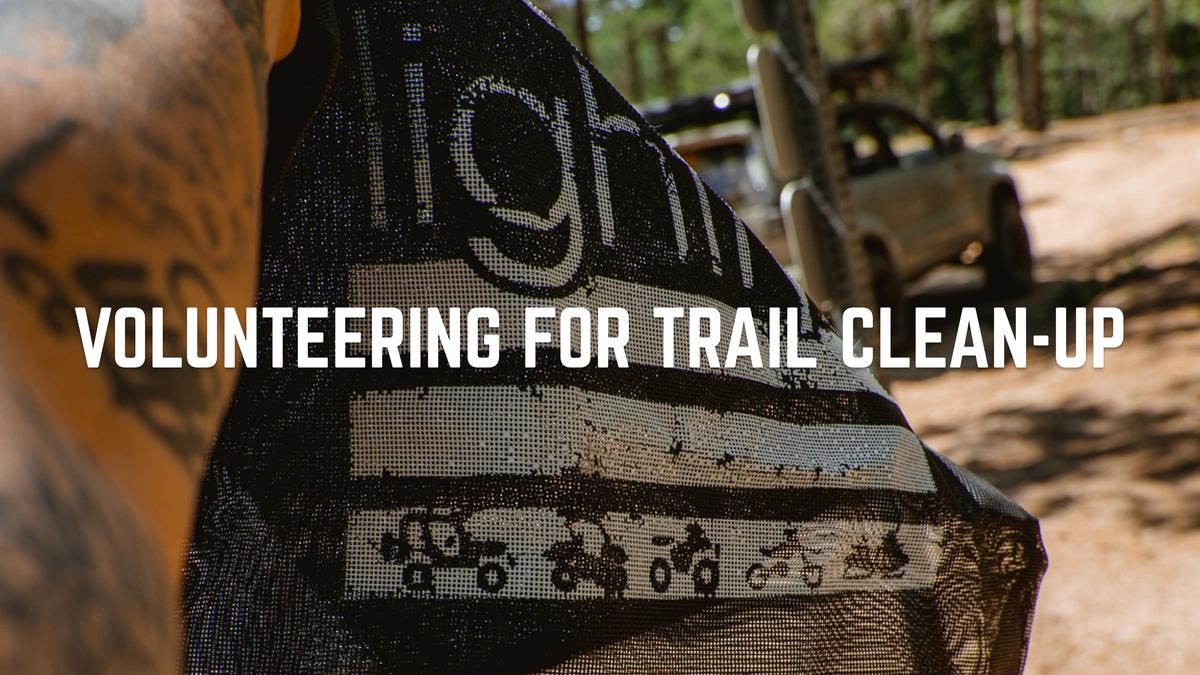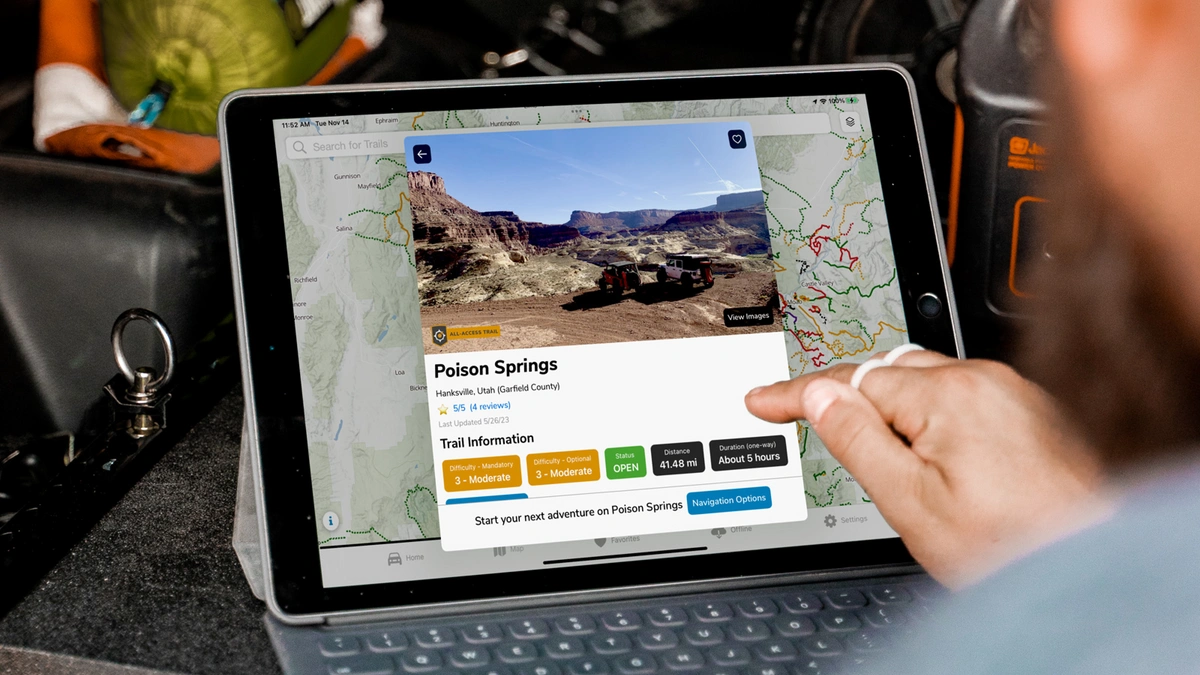
Safety Tips for Your Offroad and Overland Trips this Summer
Summer is officially here, and we know for many of you, that means multi-day offroad and overlanding trips!
Well, we want to make things a bit easier on you and provide you with some safety tips to ensure you don’t forget all the essentials for a safe and fun trip. And for those planning a trip, don’t forget to check out our trail guides to find the perfect location!
Preparation Before the Trip
Like anything else, you must prepare before you go out and have fun. Here are a few things you can do to ensure you stay safe on the trails.
Research and Planning
Thorough research and planning are crucial to do before heading out.
It starts with choosing the right trail for your skill level and vehicle capabilities. Not all trails are created equal; some are suitable for beginners, while others require advanced skills and heavily modified vehicles. Through Trails Offroad, you can easily find many trails in your area that fit your experience level and needs.
Before even finalizing a trip, you should always consider the terrain and the weather.
Terrain can vary significantly, from rocky and uneven surfaces to sandy or muddy trails. Knowing what to expect will help you prepare accordingly. It can also help you figure out what kind of gear to bring. Of course, it’s always recommended that you bring all your recovery gear on all your trips, but sometimes, it’s necessary to have specific items depending on what you plan to drive over.
Additionally, you’ll want to watch the weather forecast before your trip. Sudden weather changes can affect trail conditions, making them more challenging or dangerous, leading to a potential closure.
Vehicle Maintenance
Another crucial step in preparing for a trip is ensuring your vehicle is in top condition before hitting the trails. Start by thoroughly inspecting your vehicle, including fluids such as oil, coolant, and brake fluid. If you plan on doing it on muddy or dusty trails, ensure your windshield wiper fluid is complete as well.
Now that your fluids are topped off, it’s time to inspect your tires. Off-roading puts a lot of strain on your tires, so make sure they are in good condition with adequate tread depth. This means looking for any cuts or rips before you head out. In terms of your tire pressure, you’ll want to adjust it before heading out on the trails. The lower your PSI, the more traction you’ll have on different terrain.
Remember to check your batteries for those with many aftermarket items connected to their batteries or for those who may be taking a longer trip. A weak or old battery can leave you stranded. If you are traveling alone, you can also carry a portable jump pack with you, and of course, always carry a set of jumper cables—you never know when you will need them!
Visibility is crucial, especially if driving in low-light conditions or through dust and mud. So don’t forget to check that all of your lighting is working, too.
And finally, make sure all major components are bolted down. If you tend to go off-road frequently, the vibrations on the uneven terrain can cause bolts to become loose or fall out entirely. By double-checking the bolts on your skids, sliders, wheels, and other major components, you won’t have any issues during the trial! And pro tip: try to keep track of the tools you are using, get a set to keep in your vehicle, and don’t forget about lock-tite.
Emergency Equipment
Having the right emergency equipment can significantly affect handling unexpected situations on the trail. A well-stocked first aid kit is an absolute must for anyone, regardless of the length of their trail. Be prepared with basic medical supplies, but you can also take it one step further and bring supplies for more severe situations.
Recovery gear is another essential aspect of your preparation. The basics include straps, kinetic rope, shackles, a shackle receiver, recovery boards, and shovels to help you get out of tricky situations. As you go off-road more frequently or do more challenging trails, you may invest in additional recovery gear such as snatch blocks, a winch, or a tree saver. Having a full-size spare tire and repair kit is also indispensable. Flats are common in off-roading, and being able to repair or replace a tire quickly can save your trip.
Another item you should bring is a communication device. I suggest having a two-way radio at a minimum, especially if traveling with a group. However, it's worth the investment if you have the budget for a satellite phone and are frequently off the grid. These are vital, especially in remote areas where cell service may be unreliable.
Personal Gear
Now, let’s talk about what kind of personal gear you should bring. Your gear should be chosen with safety and comfort in mind. Wearing appropriate clothing and footwear for the conditions will be a must when you’re out on the trails. Yes, you may spend most of the time in your vehicle or sitting around at camp, but believe me, you will be hopping in and out of your vehicle more than you know. Sturdy boots with good ankle support are essential. I would even recommend getting waterproof shoes to expose them to water without soaking your socks. And I’m sure it goes without saying to remember to dress in layers. While it can be hot during the day, many areas drop in temperature at night, so don’t forget to pack warm clothing and essentials like hats, gloves, and sunglasses.
I’m sure everyone will remember to bring plenty of food and water, but for those who don’t remember, here is your reminder—bring enough food AND water for everyone joining you on your trip, including your furry friends.
Finally, don’t forget to download your offline map! Because you’ll be out without any service, you’ll want to download your maps to use without data. Thankfully, with Trails Offroad, you have a few options. You can either follow the map directly in the app, where there is information on each waypoint or download the map into Gaia to follow along. Not only will you have all the information about the trail, its conditions, difficulty level, and possible camping spots, but you’ll also get the exact directions you need to take to get to your destination. It’s that easy; everything is ready for you to follow!
Driving Techniques
Now you’re out on the trails, but are you ready? Let’s review some information you will want to know about driving through the trail safely.
Understanding Your Vehicle
To be safe out on the trails, it's essential to understand your vehicle's capabilities and limitations. Not all vehicles are built similarly; some are better suited for different things. Familiarize yourself with your vehicle's features, such as 4WD systems, locking diffs, and any suspension capabilities or offroad features your vehicle may come with.
Using 4WD systems correctly is crucial, especially for those who don’t have permanent 4WD. These systems enhance traction and stability in challenging conditions. You will want to know how and when to engage these systems. Always reference your manual if you need help to engage the system. Here’s a quick cheat sheet:
-
2WD - When there are no obstacles or challenging terrain
-
4Hi - When conditions are slippery but you’re driving at an average speed
-
4Lo - When you need maximum traction but at lower speeds, think rock crawling
When in doubt, switch to 4Lo; you shouldn’t have any issues.
Basic Offroading Techniques
Reading the terrain is one of the most essential skills in off-roading. Always pay attention to the surface you're driving and pick the safest line. If you need to hop out of the vehicle to examine the area, go ahead or ask a friend if you need a spotter. It’s better to be safe than sorry!
Approaching obstacles with the correct technique can make a significant difference. Here are a few things to keep in mind when you approach an obstacle:
-
When rock crawling, it’s best to keep all four tires in contact with the ground as much as possible and drive as slow and steady as possible.
-
For deep mud, snow, or sand, you will want to maintain momentum to get through. A few extras can help, such as mud terrain tires and snow chains in the snow.
-
Water crossings require more extra caution. Before attempting to cross, check the depth and current. Drive slowly and steadily through the water to avoid creating waves that could flood your engine. If the water is too deep or the current too strong, it's best to find an alternative route.
-
When climbing or descending a hill, maintain a steady speed and avoid sudden acceleration. If you lose traction, back down the hill slowly and try a different approach. If you are descending a steep hill, you will want to avoid riding the brakes, which could cause premature failure.
Safety Precautions on the Trail
Don’t forget the TreadLightly principles! When you’re out on the trails, you are sharing the space with other people and creatures, so be mindful when you’re
Encountering Others on the Trail
Being safe on the trail starts with good trail etiquette. Yielding and passing protocols are important to follow. Generally, uphill traffic has the right of way, as it's harder to start again after stopping on an incline. As for passing, do so in designated areas or where it's safe to pull over. If you notice a vehicle going faster than you, you should also park off to the side to let them pass.
Staying on Marked Trails
Staying on marked trails is not only a matter of safety but also of environmental responsibility. Off-roading on unmarked trails can cause significant environmental damage, including soil erosion, destruction of vegetation, and harm to wildlife habitats. It can also lead to legal consequences if you're found to be off-trail in protected areas. By staying on designated trails, you help preserve the area and ensure it remains accessible to others.
Marked trails are also usually maintained and monitored, reducing the possibility of encountering unexpected hazards.
Handling Emergencies
No matter how much you try to prepare, you will still encounter an emergency at some point. Knowing how to handle them will be your most essential skill on the trails. If you need help, assess the situation before taking action. Use recovery gear to free your vehicle, but ensure you're using them correctly to avoid injury or further damage.
Having a first aid kit and basic knowledge of first aid procedures is crucial in medical emergencies. Administering first aid promptly can prevent minor injuries from becoming major issues. If someone is severely injured, you may want to call 911 to dispatch a rescue team, but only do so if it’s a dire situation.
If your vehicle breaks down, you should also be prepared to deal with it. Always stay with it unless you know exactly where to go for help. Use your communication devices to call for assistance and make your vehicle visible to other trail users. If it’s a simple repair, you can do it on the trail but don’t forget to clean it yourself.
Using Recovery Gear
Recovery gear is essential for getting out of difficult situations. But knowing how to use it properly is even more critical. Depending on the gear you plan to bring, learn how to use it and practice when possible so that you don’t have any problems when the time comes.
There are also many video tutorials online that can help you learn how to use your equipment correctly. These videos will also teach you what kind of gear you may need and when to use it.
Vehicle Maintenance on the Trail
It’s just as essential to make sure your vehicle is safe on the trail as it is prior to starting your journey. Here are some easy things you can do to ensure that you don’t encounter any significant issues.
Checks During the Trip
This may seem a bit overkill, but ensuring there are no issues during the trip can prevent minor issues from becoming major problems. You can regularly check tire pressure. It’s okay if it goes up, as your tires will warm up as you drive, thus increasing PSI; however, if it decreases, you may have a problem.
After completing challenging sections on the trail, it may be best to inspect the vehicle quickly and ensure there are no issues. Look for signs of wear or damage to the tires, suspension, and undercarriage.
There are so many things that can go wrong out on the trail. If you come prepared with the knowledge of fixing these issues, you won’t have to worry as much. As I mentioned before, always have a bag of tools handy. You may not always have every tool but try to familiarize yourself with those frequently used in your vehicle.
A well-equipped tool kit should include wrenches, pliers, screwdrivers, and other essential tools. Duct tape, zip ties, and a tire repair kit are also handy for temporary fixes.
Being able to perform basic repairs, such as fixing a loose connection, patching a tire, or replacing a broken part, can keep you moving and prevent a minor issue from prematurely ending your adventure.
After the Trip
Safety doesn’t stop once you leave the trail. There are a few things you should be doing even after you finish your trip. Let me explain a few that I always do.
Post-Trip Vehicle Inspection
Once your offroading adventure is over, thoroughly inspect your vehicle. Check for any damage that may have occurred during the trip, including dents, scratches, and undercarriage damage. Pay special attention to the tires, suspension, and drivetrain components. You still have to drive home, and it would be awful to pull over on the side of the freeway because your vehicle is no longer drivable.
Before you head home, remember to air up your tires if they aired down. If you encounter any problems on the trail, ensure everything is stable before heading back out on the road. Once you are ready, it’s time to make the trek home.
Once you get home, try to clean up your vehicle to remove mud, dirt, and debris. This keeps your vehicle looking good and helps prevent rust and corrosion. You can also inspect the interior for any signs of damage as well.
---
Heading out on the trails is an absolute blast, but it can come with its own challenges. There are some ways to ensure that you are prepared for anything that you may encounter.
Proper preparation, understanding your vehicle, practicing good trail etiquette, and knowing how to handle emergencies are all crucial components of a safe and successful adventure.
Remember, safety should always be your top priority. With the proper knowledge and equipment, you can tackle the most challenging and demanding trails while responsibly enjoying the beauty of the great outdoors. So gear up and stay safe!
